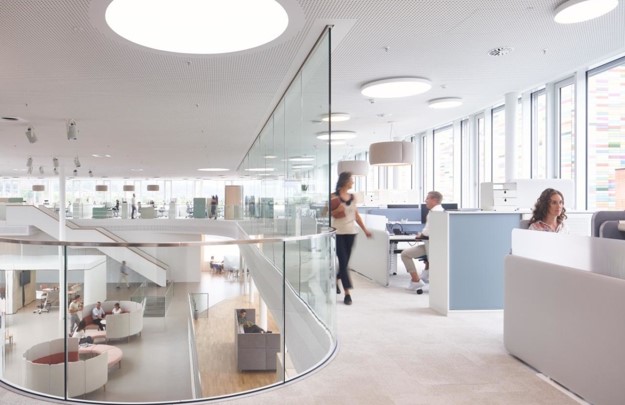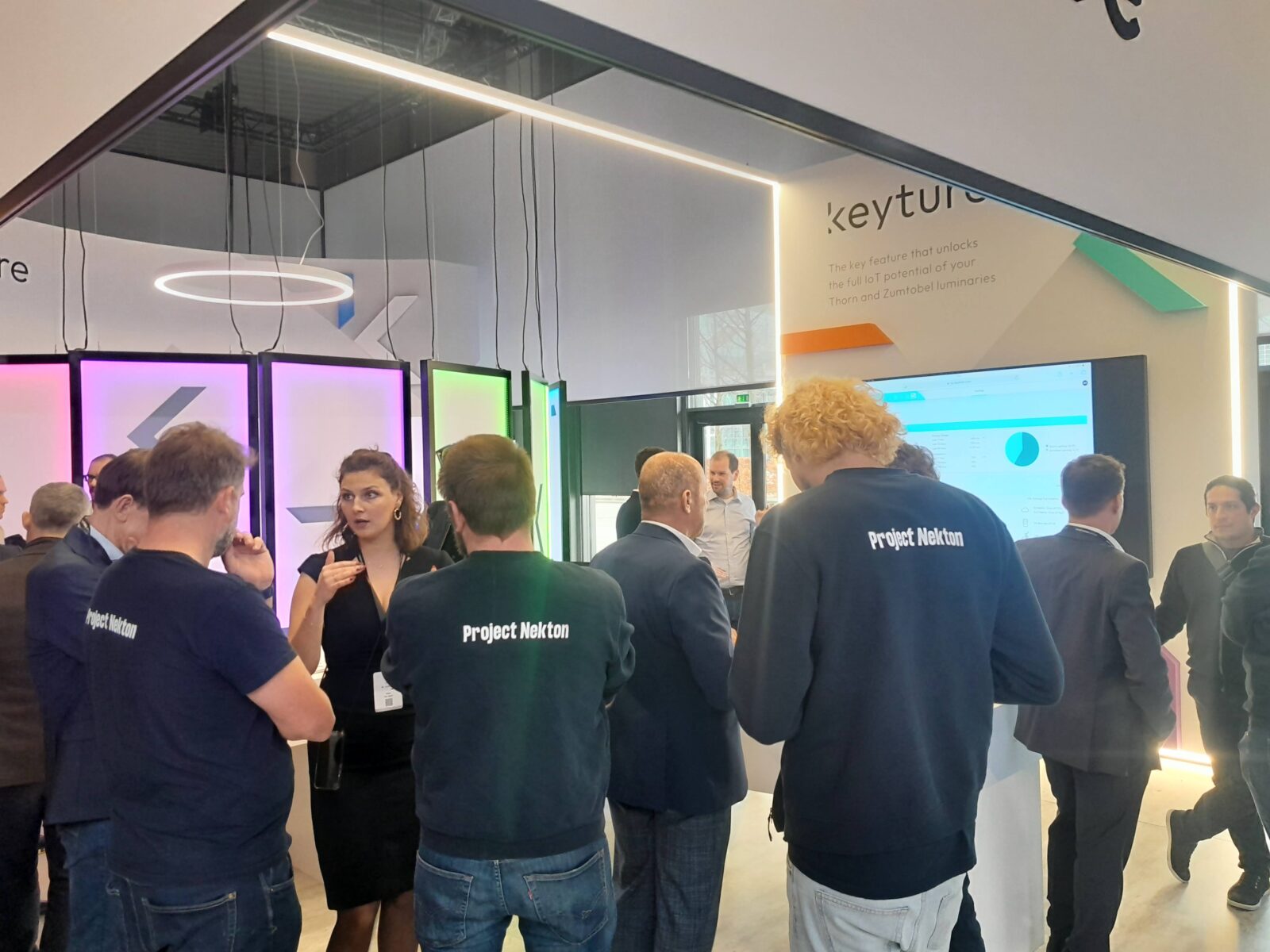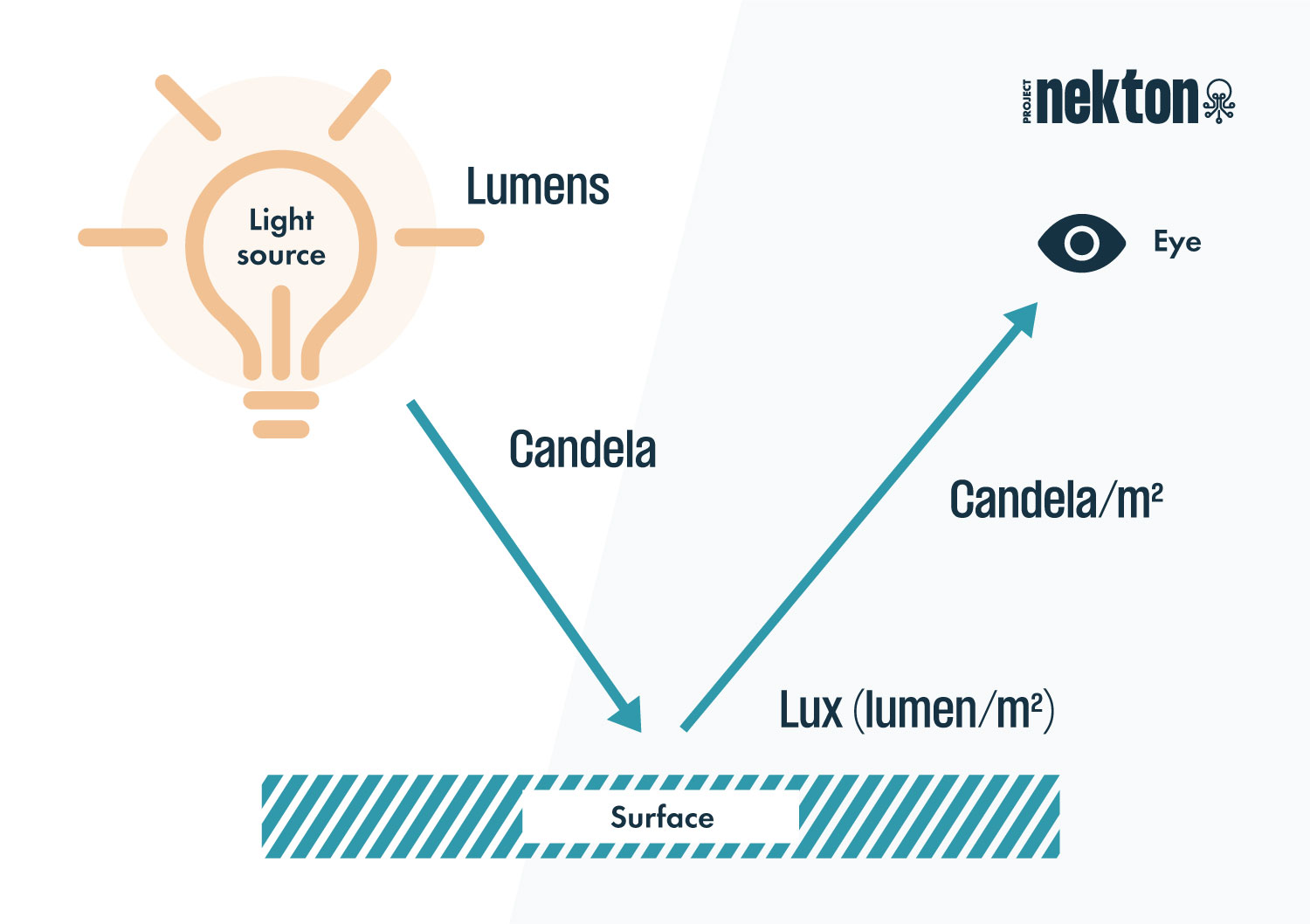In today’s (business) world, office spaces have become more than just functional spaces with desks and chairs; they have been transformed into hubs of creativity, collaboration and productivity – places where human-centric design plays a central role in improving employee well-being and performance.
An essential aspect often overlooked in this transformation is lighting. “Human Centric Lighting” is a new approach to office lighting that focuses on the needs of the people who work in these spaces.
By recognizing the relationship between lighting and human biology and implementing adaptive, customizable lighting solutions, companies can create office environments that not only support the physical and mental well-being of their employees, but also drive better performance, engagement and job satisfaction. Just how? You can read about that below!
What is human-centric lighting?
Human Centric Lighting (HCL) is an innovative approach to lighting design that prioritizes the physiological and psychological needs of people. Rather than a complete focus on merely illuminating spaces, HCL emphasizes creating environments that support the well-being, comfort and productivity of the people in those spaces.
It achieves this by simulating natural light patterns, optimizing brightness and continuously adjusting color temperatures throughout the day. Using advanced technology, such as smart LED systems, HCL creates lighting conditions that mimic the natural course of the sun, improving our circadian rhythm, mood and overall health.
Human Centric Lighting thus goes beyond the traditional concept of lighting, bringing the power of natural light inside, transforming spaces into places where well-being and productivity are encouraged.
Circadian rhythm and natural light
The circadian rhythm, also called our internal clock, is the 24-hour cycle that regulates various biological processes in humans and other organisms. It plays a crucial role in regulating sleep-wake cycles, hormone release, body temperature and other important bodily functions. Natural light, especially sunlight, is the most important external cue to synchronize our circadian rhythm.

Exposure to natural light during the day helps maintain a healthy circadian rhythm by stimulating the production of serotonin, the neurotransmitter responsible for mood regulation and general feelings of well-being. As evening approaches, the decrease in natural light leads to the release of melatonin, the hormone that prompts our bodies to prepare for sleep. This delicate balance is essential for maintaining optimal psychological and physical health, especially in the office.
Human Centric Lighting thus ensures that these natural lighting patterns are mimicked by adjusting color temperature and intensity throughout the day to better match this internal rhythm.
In practice, then, lighting is automatically adjusted to make it as optimal as possible: cooler, brighter light in the morning promotes alertness and productivity, while warmer, softer light in the afternoon and evening helps our bodies cool down and prepare for rest. In this way, then, we can work in harmony with our internal clocks instead of fighting against them.
The importance of good office lighting for employees
The importance of proper office lighting cannot be overstated, as it has a direct impact on employee well-being, productivity and overall workplace satisfaction. By aligning office lighting with the natural course of our circadian rhythms, Human Centric Lighting promotes a healthy work environment that contributes to improved focus, concentration and alertness.
- Focus and concentration: Appropriate lighting levels improve employee focus and concentration. Brighter, cooler light in the morning promotes alertness and provides ideal conditions for performing complex tasks that require mental clarity. Poorly lit or overly bright spaces, on the other hand, can lead to eyestrain and fatigue, negatively impacting a person’s ability to focus on work.
- Creativity and collaboration: Good lighting also influences the creative process and promotes collaboration among colleagues. Varied lighting schemes can stimulate different parts of the brain, creating innovative ideas and enhancing problem-solving abilities. For example, the strategic use of accent and task lighting can create intimate spaces that encourage brainstorming and team collaboration, while ambient lighting can promote relaxation and informal conversations.
- Reducing fatigue and stress: Inadequate lighting can lead to increased stress and fatigue in employees. Spaces with poor lighting, glare or flickering light can cause headaches, eyestrain and stress, all of which naturally negatively impact productivity. By implementing Human Centric Lighting solutions, companies can alleviate these problems and create a comfortable and visually pleasing work environment that supports employee well-being, reduces stress and maintains energy levels throughout the day.
The importance of good office lighting to the organization
Besides the obvious positive effects on the well-being and productivity of your employees, there are also numerous benefits for the organization:
- Energy efficiency and cost savings: One of the most immediate benefits of optimal lighting is the potential for energy efficiency and cost savings. Smart LED lighting solutions use significantly less energy than traditional lighting systems, which translates into lower energy bills and lower operating costs. In addition, LED lamps have a longer lifespan, which means fewer replacements and maintenance costs in the long run.
Learn more about lowering your energy bill with smart LED Lighting - Sustainability: Implementing energy-efficient lighting systems contributes to your organization’s commitment to environmental sustainability. By reducing energy consumption and greenhouse gas emissions, the company can work to reduce its carbon footprint, which is an increasingly important consideration for customers and employees alike. This alignment with environmentally friendly values can enhance your brand’s reputation and strengthen corporate social responsibility initiatives.
- Attract and retain talent: A well-lit and comfortable office environment can be a powerful tool for attracting and retaining top talent. Employees are more likely to stay with a company that prioritizes their well-being and promotes a healthy work atmosphere. Moreover, a thoughtfully designed workspace with optimal lighting can leave a lasting impression on potential recruits and demonstrate your company’s commitment to employee satisfaction.
- Image and customer perception: The visual impact of a well-designed office space with optimal lighting can enhance your brand image and positively influence customer perception. A professional and welcoming ambiance speaks volumes about the organization’s values, attention to detail and commitment to quality. Thus, optimal lighting can play a subtle but essential role in reinforcing brand identity and building trust with customers.
So investing in optimal lighting for your office delivers far-reaching benefits that go beyond employee well-being and productivity. By choosing energy-efficient, people-oriented lighting solutions, your organization can cut costs, demonstrate environmental responsibility, attract top talent and enhance its brand image!

Implement Human Centric Lighting in your business with smart connect LED lighting
As you have read by now, implementing Human Centric Lighting in offices is an investment in the well-being and productivity of your staff and a commitment to sustainability for the future. Optimal lighting not only improves the work environment, but also provides tangible benefits that can improve your company’s bottom line and reputation.
By partnering with Project Nekton, you can effortlessly integrate Smart Connected LED lighting solutions into your office environment. This not only increases the well-being and productivity of your employees, but also helps lower your energy bills and reduce your carbon footprint!




























